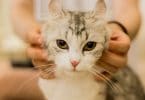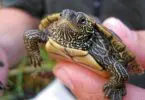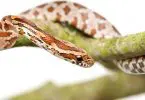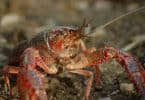This macaw, the largest of all psittacines, lives in the rain forest of central and southern Brazil. It has a thick beak since it is adapted to break the fruits of a palm tree that only grows in a very small region of Brazil, which has facilitated its excessive capture and has put this species in serious danger of extinction.
Table of Contents
Largest Of All Macaws
This parrot is the largest of all macaws, as it can be 1 meter long and weigh more than 1.5 kg. It has completely blue plumage, darker on the wings, although it is yellow at the base of the lower jaw and around the eyes. Its strong and powerful bill is black, and its tail is blue and longer than the rest of the body.
They move in pairs or in small family groups, which group together in a certain number of individuals in localities where food is abundant. They are always kept not too far from the watercourses and the riverside forests that surround them.
Danger Of Extinction
It is a species that is in serious danger of extinction due to the destruction of its habitat due to the expansion of agriculture, the direct hunting of the specimens, and the capture of young animals for use in the illegal trade in companion birds.
Its current population is estimated at about 3,000 birds. It was in the period between 1970-1990 when their populations suffered a greater decline, it is calculated that in the 1980s, more than 10,000 birds were captured freely. Starting in the 1990s, strong awareness campaigns and conservation initiatives seem to have somewhat stabilized their strength.
Characteristics
- Class: Birds.
- Order: Psittaciformes.
- Family: Psittacines.
- Length: 100 cm.
- Weight: 1450-1700 g.
- Food: Vegetarian.
- Laying: 2-3 eggs, normally 2.
- Incubation: 27-30 days.
- Habitat: Edge of the jungle and forest galleries.
- Distribution: Brazil, Northwest of Paraguay, and East of Bolivia.
The Largest Size Parrot
Also called “blue macaw”, this superb parrot, which boasts the largest size in length among all the Psittaciformes, over a meter, has a wonderful blue base color, of a particular shade reminiscent of the flower of the wild hyacinth, from which it resumes therefore both the scientific and the common name. The weight is also considerable, given that an adult male can reach two kilos. All the plumage of the hyacinth macaw is blue, except for the underwing and the under tail where the blue darkens until it becomes almost black.
Periophthalmic Ring
Laterally than the root of the beak, there are yellow half-moons, and intense yellow is also the showy periophthalmic ring that surrounds the singularly round eyes with a very dark iris.
The Beak Of The Hyacinth Macaw
The beak of the hyacinth macaw, anthracite black, it is a masterpiece of evolution and probably represents one of the greatest examples in which strength and sensitivity merge to form a unique tool in nature, able to crush the shell of a Brazilian walnut without problems as to handle with perfect mastery very small seeds and peel them with skill.
Excellent Climber
The hyacinth macaw uses the beak, like most parrots, with the extreme skill to help him move from branch to branch, he uses it in a very delicate way with his partner or companion in producing particularly affectionate parental care. The strong legs are dark grey. Able to crush the shell of a Brazilian walnut without problems as well as to handle very small seeds with perfect mastery and peel them with skill.
Excellent climber, the hyacinth macaw uses the beak, like most parrots, with the extreme skill to help him move from branch to branch, he uses it in a very delicate way with his partner or companion in producing particularly affectionate parental care.
Stronger Legs
The legs are strong and dark grey.
3000 Specimens
This superb psittacide preferably lives on the edge of tropical forests in the center of the South American continent but is found in quite disparate environments. Very common until a century ago, unfortunately, today it survives in no more than 3000 specimens, in palm forests but also in marshy areas such as the famous Pantanal.
An Excellent Flyer
The hyacinth macaw loves water very much and is an excellent flyer, capable of reaching considerable altitudes, even if it is usually limited to flights just above the top of the forest trees. This parrot lives in pairs or in small groups of up to ten individuals. It is active in the early hours of the morning and in those immediately preceding sunset, resting on the highest branches of the trees in the warm central hours of the day.
Sedentary Birds
Hyacinth macaws are sedentary birds, except for movements related to the search for food in the areas where palm trees mature. In captivity, it begins to be quite widespread, thanks to intelligent breeding and reproduction programs.
Purple Hyacinth Macaw
The plumage of the upper part of the body of the small hyacinth macaw is colored bright blue or purple. On the head and neck, these colors are diluted with a greenish tint. Feathery, bright yellow patches can be seen around the eyes and at the base of the beak. When the parrot spreads its wings, black plumage is noticeable under them. Its strong legs and strong beak are dark greys in color; eyes are brown. The length of a parrot with a tail is about 75 cm. Bodyweight sometimes reaches a kilogram.
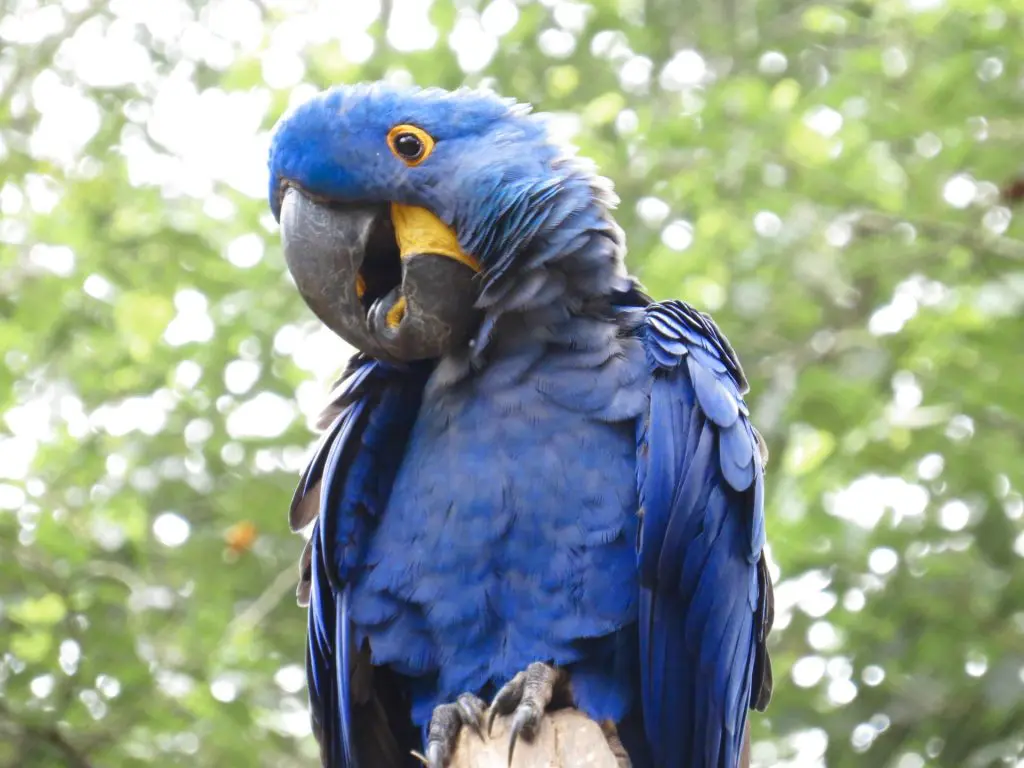
Female Bird
The female of the small hyacinth macaw differs from the male in a noticeably smaller beak. There are no differences in color or size. Only in young birds, the yellow areas are much lighter, and the tail is much shorter. Also, unlike adult parrots, young ones have a thin, squeaking voice.
Live in Pairs And Groups
Today, these birds can only be found in northeastern Brazil. They live in wooded areas or in the vicinity of sandstones, high above sea level. Small hyacinth macaws usually settle in pairs or groups. For housing, they use woodpecker hollows, expanding their size with the help of their paws and beak. They can also nest themselves in rock crevices or on the slopes near the river. They try to create comfortable conditions for themselves: thin twigs, grass, and sawdust are carried into the middle of the dwelling.
Different Sounds
The loud, screaming voice of an adult parrot is heard from far away. Its peculiarity is that the bird can make completely different sounds – from a simple croak to a hoarse bark. Therefore, it is often completely incomprehensible who is shouting – a macaw or some wild animal.
Feeding
The small hyacinth macaw feeds on berries, fruits, and nuts. The latter constitute the main diet of the parrot and are its favorite delicacy. After lunch, they sit in the crowns of trees and wait out the heat, after which they can go again in search of food. At the end of the twentieth century, the number of these parrots was only a few hundred individuals. Due to poaching and hunting for representatives of the species, it is at the stage of extinction.
Black Hyacinth Macaw
Another of the records held by this blue macaw is that its beak – black in color – is the strongest of all birds. He uses it to feed on seeds and nuts and to break wood, logs, and coconut nuts.
It also feeds on ripe fruits like berries and mango, flowers, buds, and leaves. Eat clay, rich in minerals, to neutralize the toxins that unripe fruits present in your diet.
Color Varieties
Its dark blue feathers are really striking and cover its entire body. The legs are greyish and have a yellow stripe under the beak and around the dark eyes. Unlike other macaws, the Jacinto does not have a featherless “mask” on its face. There is no sexual dimorphism in this blue macaw, although generally, the females are a little slimmer than the males. This is the only difference between couples.
Nesting
These birds nest in tree holes and lay between one and two eggs, but only one is the one that usually survives. The chick remains with its parents for three months and can reproduce from seven years of age.
Lear's Macaw or Indigo
Another of the blue macaw species that we can find in Brazil and also considered endangered.
Lear's Macaw or Indigo Macaw (Anodorhynchus Leari)
- It prefers to inhabit jungles and palm forests, the fruits of which make up its diet to a great extent. It nests in sandstone foothills after digging holes with its beak and dusting with its feet.
- In each clutch – between December and May – this blue macaw lays one or two eggs. However, some couples do not mate every year. The Anodorhynchus learis –scientific name– reaches sexual maturity at two years and can live up to 50 years.
- One of the most striking aspects of this bird is that it can adapt to the winds and the areas it ‘colonizes’. When they are in a flock, a group of males goes ahead to the rest to explore the area and verify that there are no dangers (otherwise, they screech loudly).
Yellow-Blue Macaw
The last of the types of blue macaw in this article actually has yellow as its predominant color and turquoise as its secondary color, but we can include it in the family. Its scientific name is Ara ararauna, and it lives in South America, from Panama to northern Paraguay, specifically in the Amazon.
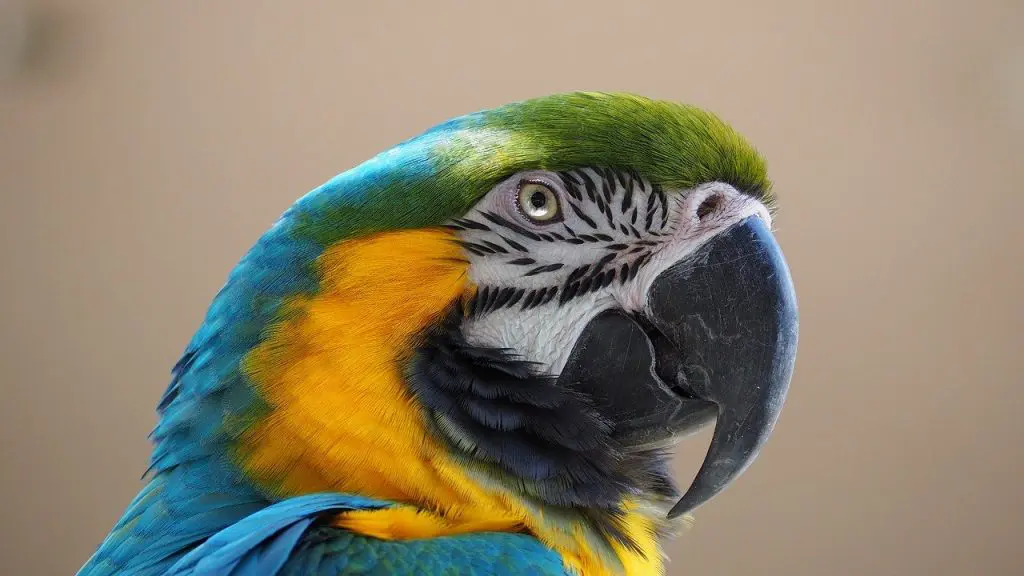
Yellow-Billed Macaws
They measure around 80 centimeters and weigh 1.5 kilos, and there is not much difference between the sexes. They are yellow at the bottom and turquoise at the top. The bill is black, the legs are dark grey, and the face is white with black lines.
In freedom form groups of up to 30 copies. Once they are a couple, they are no longer separated – they are monogamous – and, if in the nesting area, there are few places to nest, the couple can expel those who try to use their old homes.
Female Parrot
The female hatches two to three eggs and incubates them for four weeks. After hatching, the chicks spend 90 days under the care of the parents. The male is responsible for feeding the female and protecting the nest. These three types of blue macaw are those that still live in the natural state. We are praying that it will continue to be so in the future.
The Macaws Are Wild Animals
Macaws are wild animals that live in the jungle of South America, and they are also pets. Did you know that they can blush when you talk to them?
Hyacinth Macaw Pet
They are highly dependent on those who live with them; for this reason, it is an animal that we should adopt only if we are going to be able to offer it company, distraction, and regular enrichment. In the case of stress, loneliness, or mistreatment, the macaw can respond aggressively.
Ara Ararauna, Blue And Yellow Macaw
The first one that we are presenting to you is the Ara Ararauna, blue and yellow macaw. This beautiful macaw is not in danger of extinction. It extends through much of the jungle of the Amazon rainforest, Peru, and Bolivia. The Blue and Yellow Macaw measures between 76 and 86 cm, and its weight ranges between 900 and 1500 cm.
Excellent Pet
There is no dimorphism in males and females; it is an excellent pet very easy to maintain in its physical appearance. However, the emotional part of this bird is more delicate. If your caregiver doesn’t take care of you properly and doesn’t give you enough time, you can become depressed and pluck your feather. They need large cages where they can spread their wings, as well as toys and room to exercise.
Ara Macao, or Macao Macaw
Next up is the Ara Macao or Macao Macaw. It is a very intelligent bird with an extraordinary facility to caoimitar voices, noises, and performs tricks. For this reason, and for its beautiful coloring, it is a very widespread pet, and even used in shows thanks to its skills and great sociability. It measures up to 90 cm and weighs more than 1 kg. The scarlet macaw, or Ara Chloropterus, is meant for being a very active, restless, and intelligent bird. However, it is a complex species as a pet, since it does not bear solitude well.
Ara Severus
The large Maracana, or Ara Severus, is spread from Panama to the Amazon Basin. It lives in tropical forests from sea level to 800 m. It measures between 40 and 50 cm, and its weight ranges from 300 to 390 gr. It is not a macaw as popular as a pet as other major species, although it is an excellent macaw as a pet. The severe macaw is not threatened.
Hybrids
In addition to the different types of macaw, there are also hybrids, and in the numerous macaw breeding farms, in addition to the reproduction of pure species (identical to wild ones), crossing and hybridization between members of Ara are more and more frequent. These new species have the ability to reproduce with each other.
Needs More Attention
In addition, we have mentioned, you should know that the macaw is one of the birds that need more attention and care; We no longer only talk about food or the needs for space (and exercise) that they require. You should interact with him and take him to the vet if required. It is also an animal that loves to express itself and make sounds of all kinds; for this reason, if you reward tranquillity within the home, a macaw is not for you.
Having a macaw as a pet is really surprising since it is an animal capable of learning up to 30 words perfectly. They are very long-lived specimens, living up to 80 years if cared for properly and with care.
Hyacinth Macaw For Adoption
Adopting a hyacinth macaw is an ideal option because it is a very dependent and affectionate bird, which is always very close to its caretaker with whom it wants to play and spend time together. Currently, there are 14 species of wild Macaws that inhabit the Mexican jungles to the Argentine jungle.
However, the macaws that are adopted in prestigious stores come from hatcheries. There are a famous macaw and parrot breeding farm in Great Britain. As they are very expensive animals, they must attach all the documents that fully guarantee their legal origin before considering having a
Hyacinth Macaw Size
The greatest parrot by length on the planet, the hyacinth macaw is 100 cm if we measure the size from beak to the back. Usually, the weight of this parrot is 1.2 to 1.7 kgs. They are very fantastic and the most stunning bird. It is the largest parrot among all parrots, and usually, it is originated from Brazil and Bolivia. Usually, the mature male bird reaches the size of 40 inches. There are very few people who actually have this blue hyacinth macaw. However, you can see it in the zoo or a larger bird’s shop.
Hyacinth Macaw Facts
1. Macaws Are The Largest Parrots
More than 370 types of parrots are present on Earth, and macaws are the largest. These friendly birds normally weigh between 1 and 2 kilos, which is quite a lot for a bird. In addition, they have an impressive wingspan of up to one and a half meters.
2. Varieties Of Macaws
While macaws are clearly recognized as the largest parrots, it is worth noting that there are many different types of macaws in a wide variety of sizes.
3. Macaws Can Survive For More Than 80 Years
When you take proper care of blue and yellow macaws, you can live for an average of 60 years, and many have been recorded for up to 80 years or even longer. Those who are interested in adopting one of these impressive birds should know this information to ensure that they are willing to spend enough time taking care of their pet. It is very common for these birds to survive longer than their owners; therefore, you must take this information into account to adopt a macaw.
4. It Is Possible To Breed Hybrid Macaws
While these birds have been remarkably popular with pet owners, there are many people opposed to breeding hybrid macaws, as these birds do not occur naturally in the wild. Some macaws are strong enough to break coconut shells. Jacinto macaws have enough force in their huge beaks to break a coconut shell.
Other Types Of Macaws
Other types of macaws also have powerful and impressive beaks, so we must bear in mind that they have a lot of strength and that if for some reason they bite us, we have to be careful. These birds, like all parrots, need social interaction and socialization so that they do not get bored or depressed. A boring macaw will sting any wood it can find, and with its powerful beaks, this can be a big problem.
Reproduction
Reproduction Hyacinth macaws begin to breed when they reach the age of 7 years. These parrots mate once for a lifetime, although they can also live in groups of up to 10 individuals. Birds arrange nests in tree hollows, which are often expanded to the required size with the help of their paws and beak, or they dig holes in the steep banks of turbulent rivers. The mating season for these parrots occurs at the end of winter – beginning of summer.
Most often, they incubate two eggs; the incubation period lasts 30 days. There can be only two clutches per year. The duties of the male during incubation are to ensure the protection of the nest and food for the female.
Chicks
Chicks are born blind and naked, and in competition for food, usually one of them dies. Plumage in babies appears two months after birth. Only at the age of 3 months, the chicks begin to fly out of the nest; however, despite the emerging independence, the parents continue to feed them.
Hyacinth Macaw Habitat
The hyacinth macaw lives mainly in Brazil, in its northeastern part, and is common in Bolivia and Paraguay. Basically, these macaws live where palm trees grow, such as Mauritius. They are kept by blue macaws either in family groups or more often in pairs. Hyacinth macaws also live in captivity – in zoos, nurseries, and together with a person in his house.
In the case of keeping a bird in captivity, it is fed with any grain feed, but especially these parrots love corn, sunflower seeds, rice porridge, herbs, fruits. With great pleasure, they gnaw on tree branches. It is good to keep these birds in special cages made of thick rods, which they cannot bend with their strong beak. They inhabit the rainforests of Brazil, eastern Bolivia, and Paraguay.
It lives in the savannas and open forests of central South America, from central and southern Brazil to northern Paraguay and eastern Bolivia. Feeding basically frugivorous, it eats all kinds of fruit and seeds, even those that are protected by the hardest shells, which can break thanks easily to the force of the beak.
They form couples that remain stable over time and move through a more or less extensive territory throughout the year.
Hyacinth Macaw Breeders
Usually, these parrots are not often found in full-service pet shops because they are very expensive. Many retail buyers are expecting to pay more than 10000 dollars for a young hyacinth especially the adult parrot. So they are very high price parrots especially if they are proven to be bred successfully. These birds are very rare and many of the baby hyacinths are in breeding programs rather than being bred by novices.
Many breeders are thinking of eventually introducing the species into the wild where their numbers are rapidly declining. There is a danger that this beautiful bird might disappear forever.
Hyacinth Macaw Lifespan
- Parrots are incredible animals. They are smart, loving, and fun, and they also live a long time. But how long does a parrot live? Is it true that they can compete in longevity with humans?
- Parrots are an especially long-lived type of bird, but within the group, there is a lot of diversity. Also, the bird’s lifestyle can make its longevity vary greatly. Captive parrots typically live much longer than wild parrots because their natural predators are removed from the equation and the advanced levels of veterinary care we can provide them.
- In general, the larger the parrot species, the longer they will live on average. Therefore, a cockatoo will live several times longer than a parakeet or a lovebird.
- Unfortunately, today its population in the wild is declining rapidly, but due to the fact that the bird gets along with humans, it can be found more often in zoos and nurseries
- Characteristic hyacinth macaw its unusual coloration is bright blue feathers, tail and wing edges of dark blue, grey, or black tone. Blue-black eyes around which a ring of yellow plumage forms.
- By weight, adult birds weigh no more than 2 kg, and babies at birth do not reach 200 g. The bird’s body size is 40-60 cm, the wingspan is 70 cm. The parrot also differs in its powerful, heavy, black beak; birds easily bite into a large walnut.
- Outdoors, the macaw lives an average of up to 70 years, but wildlife often shortens its life span. At home, the parrot can live for more than 80 years! In general, they lead to a measured lifestyle. The bird carries posterity up to 30-40 years, depending on care and habitat. Puberty begins at age 6.
- The female lays eggs, while the male gets food and protects his family.
- Its intelligence (it is capable of learning and understanding up to 30 words), and because it can live more than 50 years.
- However, they are not as long-lived as cockatoos. The life of hyacinths is not precisely known, but it is probably around 50 years old. The reproductive age begins between 6 and 10 years and can last up to 30 years.
- Hyacinths are playful and love to chew. They should always be provided with toys, especially non-toxic wooden blocks and tree branches. To ensure safety, accompanying macaws should not be allowed to roam unsupervised at home, as they often encounter toxins or dangerous elements.
Hyacinth Macaw Price
On sale are absolutely tame fosterlings of the hyacinth macaw (Anodorhynchus hyacinthinus), as well as chicks of other species of macaw parrots from European nurseries. Seeing a bird with feathers of the color of a heavenly hyacinth, it is impossible not to fall in love with it. The hyacinth macaw is one of the most spectacular and expensive species of parrots.
Babies
All babies are absolutely hand, affectionate, and playful. They will give you great pleasure to communicate with them, bring comfort and warmth to your home. In domestic zoo corners, keeping is extremely rare due to its rare breed and high prices.
Most Expensive
The parrot of this species is the most expensive species in the whole world. So the price of hyacinth macaw is very high according to other species of parrots. It is very large in size, and generally, it has a very high price according to other species of parrots. It is very large in size and generally has a soft nature as you can feel it very well when you see it. However, you should keep yourself away from them because if they get angry, then the beak is incredibly powerful and can catch you.
Price In The USA
Usually, in America, the price of this parrot is around 10,000 dollars. So it is considered to be the most expensive parrot if you are thinking of taking it as a pet. However, according to the present Singaporean broadsheet, the parrot usually cost about $40,000. The price of these parrots is usually high because they are moving towards extinction, and also they are listed as vulnerable due to population declined. One of the causes of its high prices is due to the population decline. However, population decline is due to the ten thousand words which have been taken from the wild for illegal trade.
Hyacinth Macaw World of Warcraft
This is the parrot cage that teaches the people how to summon hyacinth macaw, which is a parrot companion. The first Epic quality companion was introduced, which is obtained outside of the world of Warcraft trading card game. The second game was crawling claw, which you can obtain through archaeology.
In the game, the parrot is the most beautiful collectible pets. The parrot is a great next word character in full nether wind set. You can select a color that can match perfectly. The bird is very expensive because the Drop rate is low.
You can check the pet’s battle stats and can read the community comments. You can also discover other detailed information on it as we all know that a hyacinth macaw serves as the real flying battle pet in the game.
Conclusion
Before, we have been talking about the life of parrots in a human environment. And what do they represent, so to speak, “by themselves”? What is their life in the wild? How does this or that species differ from others – what is the area of its distribution, features of the mating season, nesting, favorite food? What should be done to make the birds want to breed and feed their chicks in captivity on their own?
In this article, I tell you the most popular large species of parrots: macaws, cockatoos, amazons, grey, noble parrots – all types and subspecies, reproduction, feeding, maintenance, prevention of diseases. Just to love is a mapo. Only love can work miracles, inspired by knowledge. Let them open before you the doors to the bright and noisy world of parrots – beautiful, intelligent, unique representatives of the feathered kingdom.




